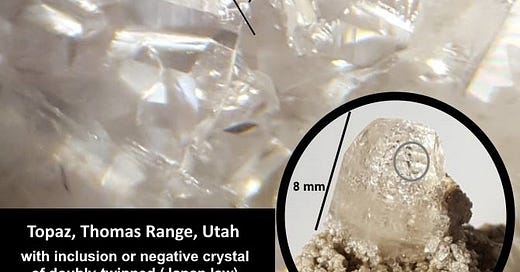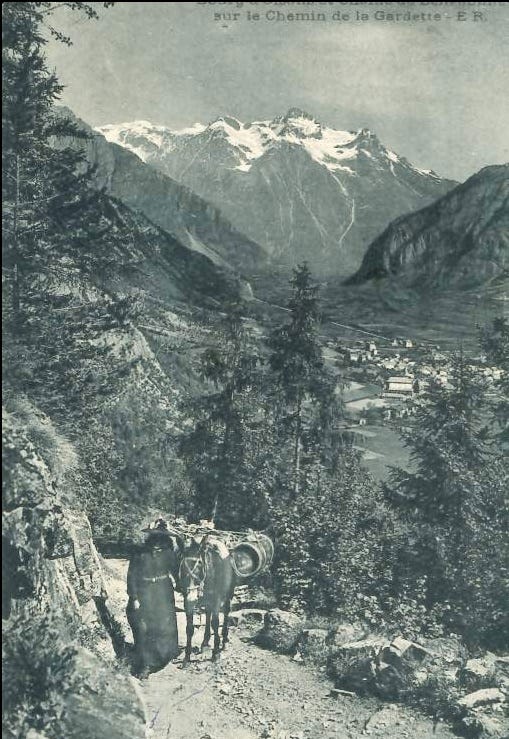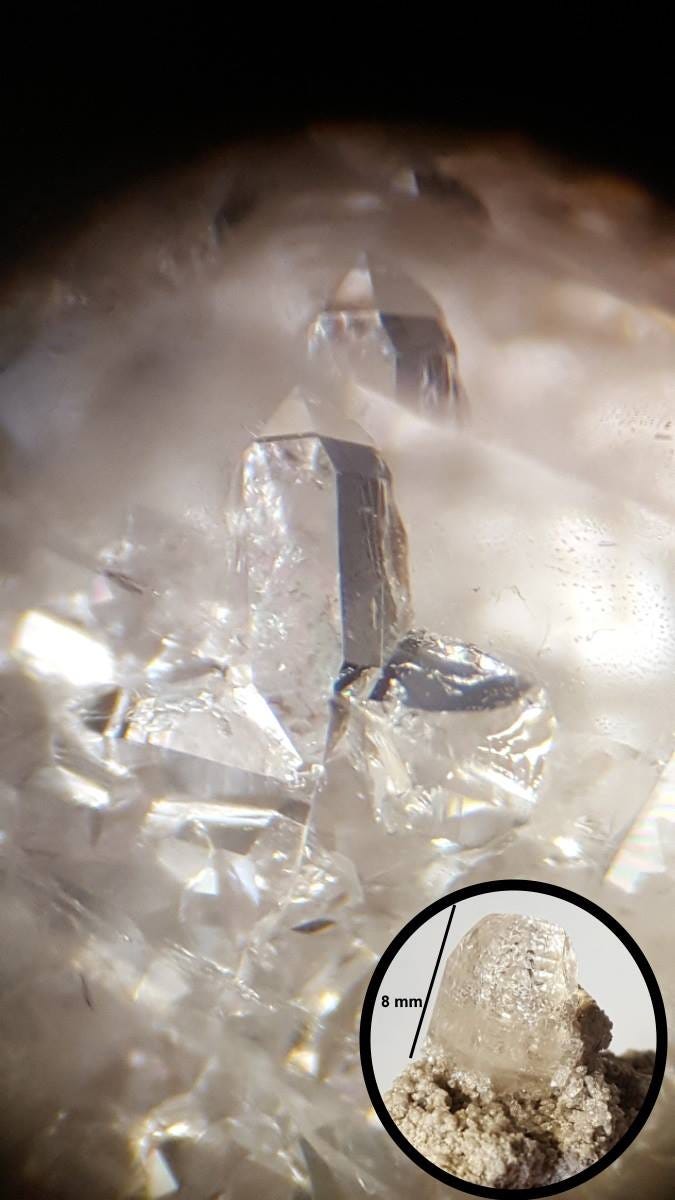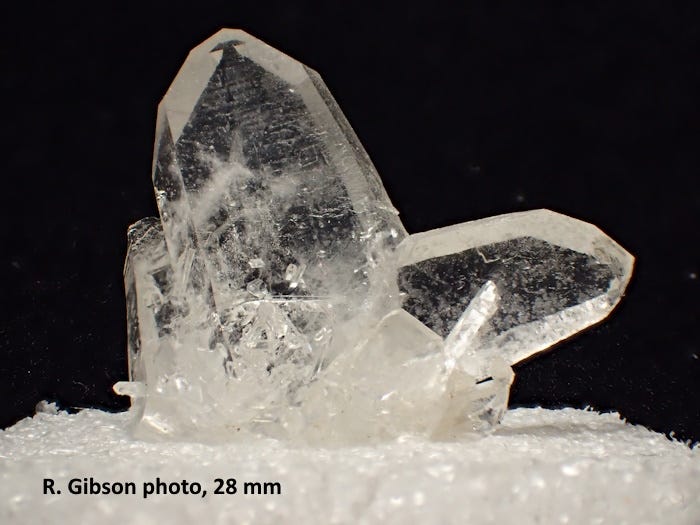Life in the USA is not normal. It feels pointless and trivial to be talking about small looks at the fascinating natural world when the country is being dismantled. But these posts will continue, as a statement of resistance. I hope you continue to enjoy and learn from them.
This little 8-mm topaz crystal isn’t particularly special, until you look microscopically. It has either an inclusion of a quartz crystal that’s about 1.5 mm long, or, less likely, a negative crystal, a void space, where the quartz crystal used to be. That’s not especially unusual, although I think it’s more common for negative crystals to reflect the crystallography of the host mineral (i.e., the topaz).
The cool thing is that the inclusion is, I think, a double Japan-law twin of quartz, double meaning there are two crystals branching off at 84°33' from the main central crystal (Japan-law twins often only show two paired members). The three separate members of the twins are labeled 1, 2, 3 in the image.
The blurry lines running from lower right toward upper left are edges of pyramid faces on the surface of the topaz crystal, and in the inset, the small area where the quartz is found is circled.
Contact twins like this are called Japan-law twins because of many occurrences in Japan, but the first such twins were discovered at the La Gardette Mine in the French Alps near Grenoble. La Gardette was mined for quartz crystal specimens from the 17th century until 2005, and for gold in the 1780s. The twins are sometimes called La Gardette twins but most people would not know what you are talking about; the name Japan-law is by far the prevalent name.
I’ve had this little guy since the early 1970s but never looked at it under the microscope until recently. It is from the well-known topaz occurrences in the Thomas Range, Utah USA.
For more about the topaz of the Thomas Range please see this post: Etchings on a topaz crystal.
Here is a better-looking example of a Japan-law twin, this one from the Black Pine Mine, Montana USA. 28 mm.








This is going to force me to go back and look harder at my Thomas Range topaz, collected in the late 70's.